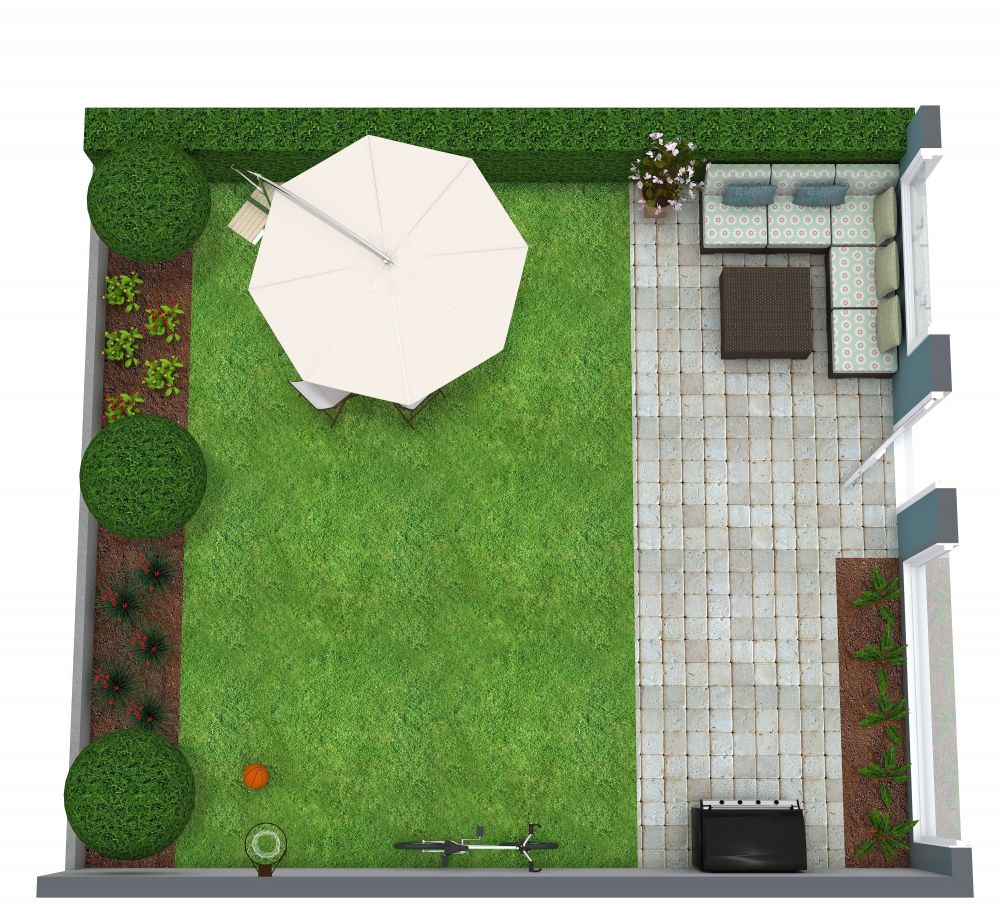Backyard Plan Examples
A well-planned backyard adds beauty, functionality, and value to your property. Your backyard can be a place for entertaining, fun with the kids, sports, hobbies such as gardening or cooking, and so much more. If you are dreaming of enhancing your backyard, you aren’t alone. These days, many of us are reimagining and improving our outdoor living spaces. But how do you start on a backyard plan? One of the vital first steps is to determine your goals. By thinking through what you want to achieve, you’ll start narrowing down the key elements you want in your backyard plan. Take a look and see which of these common backyard goals resonate with you:
Read More
An Entertaining-Focused Backyard
If you love to entertain, why not design the ideal backyard for socializing or dining outside? First, consider whether you want lounge seating, dining seating, or both. This will help you determine the patio and deck space you may need. Lounge seating typically consists of chairs and couches around a coffee table and is perfect if you’ll have friends over for drinks and conversation. If you love to cook and dine outdoors with friends, consider a dining table set up, which is easier to eat from than a coffee table.
Speaking of outdoor dining, it’s ideal to situate the outdoor eating area near your kitchen for easy access. Or, if you like to grill, your backyard plan may include an outdoor kitchen, complete with a grill, counter space, and a mini-refrigerator. It’s also handy to have a buffet table to set out the food and drink for your guests.
Three other considerations for an entertaining-focused backyard plan are warmth, shade, and insects. For warmth, consider an outdoor fireplace, fire pit, or heater. For shade, you can add a built-in structure, use an existing shade tree, or add shade umbrellas. If you live in an insect-prone area, screen rooms can be a good option.
Backyard for Kids
If you are a young family, your backyard plan could emphasize the kids and include elements for exploration, fun, sports, and imaginative play. Little ones like to run, climb, swing, and play in nature. Plant ideas for this type of backyard plan include a grassy area on which to run around or kick a ball, a shade tree or structure under which to read or have picnics - maybe even a beanpole “room” - and taller plants for games like “hide and seek.” Kids also have fun and learn from growing a small vegetable garden. Hardscape ideas include a walkway or path for a tricycle or bike, a sports court, a built-in sandbox, and a playhouse or treehouse. Items you could purchase for this type of backyard plan include a swing set (or swing to hang from a tree branch), a water table, trampoline, or skateboard ramp.
Sports-Oriented Backyard
If athletics are your thing, or you have older children and teens, one of the main goals for your backyard plan may be to add ways to incorporate sports at home. Fun additions could include a cornhole or ladder ball set, an outdoor ping pong or pool table, and a small putting green. If you have an extended, narrow area, what about a space for bocce ball, a horseshoe pit, or a shuffleboard area? With more grass, you could add a disc golf target and a place for croquette, badminton, soccer, or volleyball. A sport court can be a flexible addition that allows you to play basketball, pickleball, or tennis. For swimmers, either a long swimming pool for lap swimming or a small lap pool with a current.
Edible Backyard
If you love cooking with local produce, consider making an edible garden the focus for your backyard plan. Key elements could include an herb garden, a vegetable garden, berry bushes, and fruit trees, such as apple, peach, pear, and plum. Be sure to consider whether garden beds should be raised, and how to protect your edibles from critters - you may need a fence and even netting around some plants. A potting table and a shed for garden tools are useful additions to this type of garden.
Wildlife Habitat
How about a garden that will attract wildlife to your yard and neighborhood? Depending on your area, this could include songbirds, hummingbirds, butterflies, bees, and other small wildlife. For your plan, be sure to include food, water, shelter, and a pesticide-free garden. Start by finding out the native species in your area. Native plants provide the nectar, seeds, nuts, fruits, berries, pollen, and insects that local wildlife need for food. Then, add water sources, like a birdbath, pond, or small running stream. A shelter may include trees and plants that animals can use to shield themselves from bad weather and raise their young. Finally, be sure to use natural and sustainable gardening practices without pesticides.
A backyard plan starts with figuring out your top goals and brainstorming ideas. Make a list and even mock up your ideas on paper or on a computer. You may be able to create a backyard plan yourself, or, if you are a garden novice, it’s a good idea to share your goals and draft plan with an expert who can help you create the backyard of your dreams.